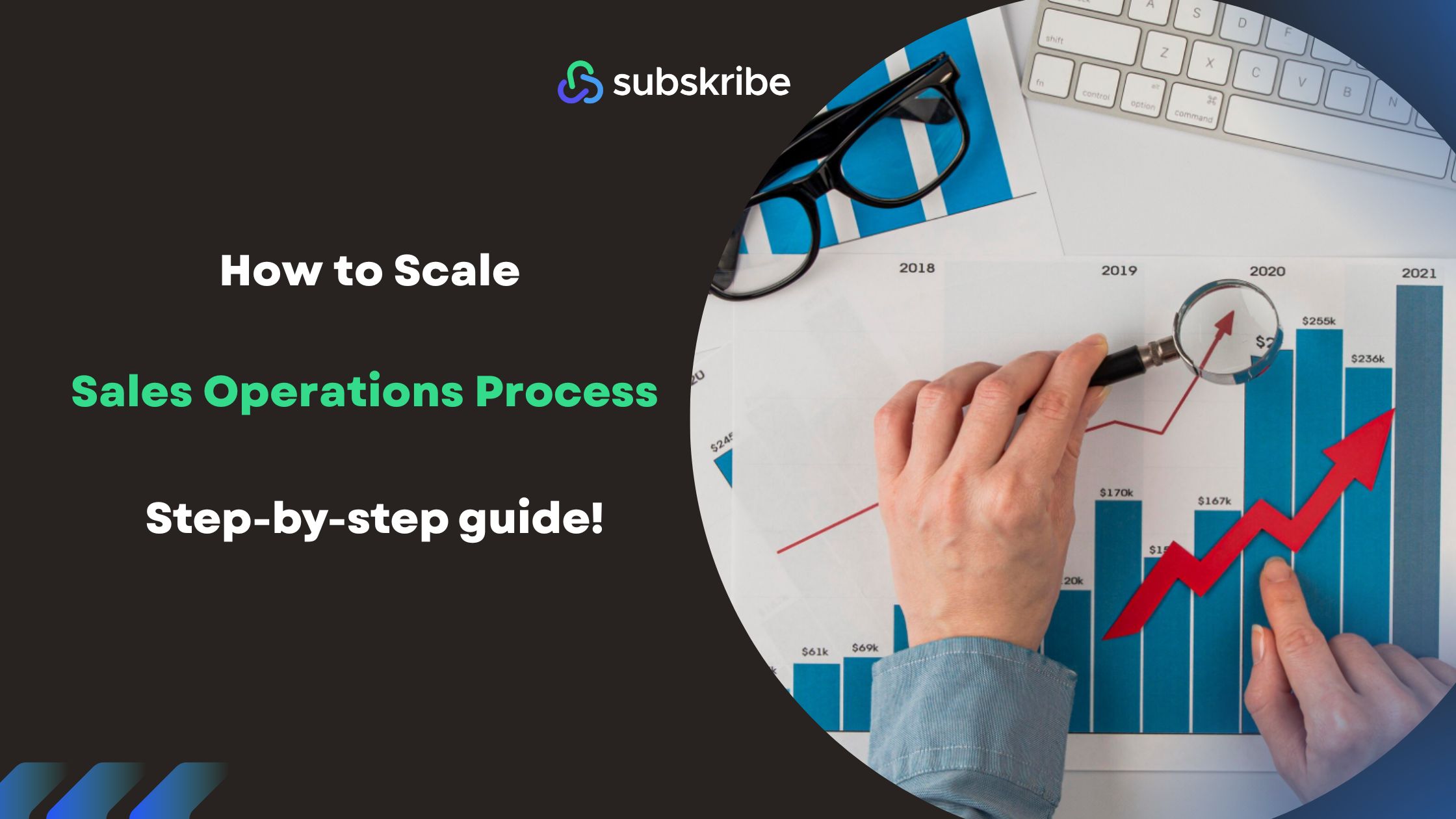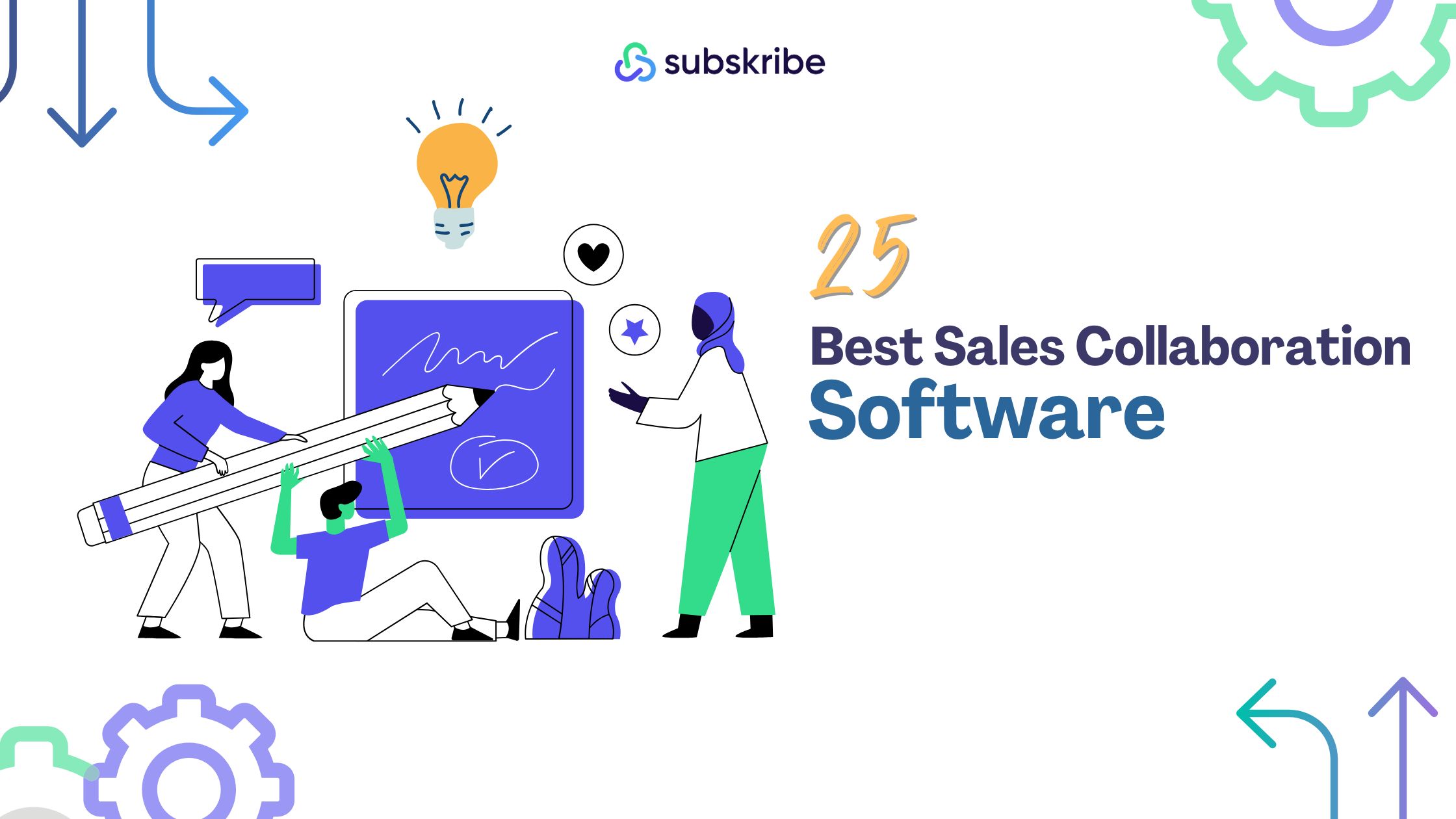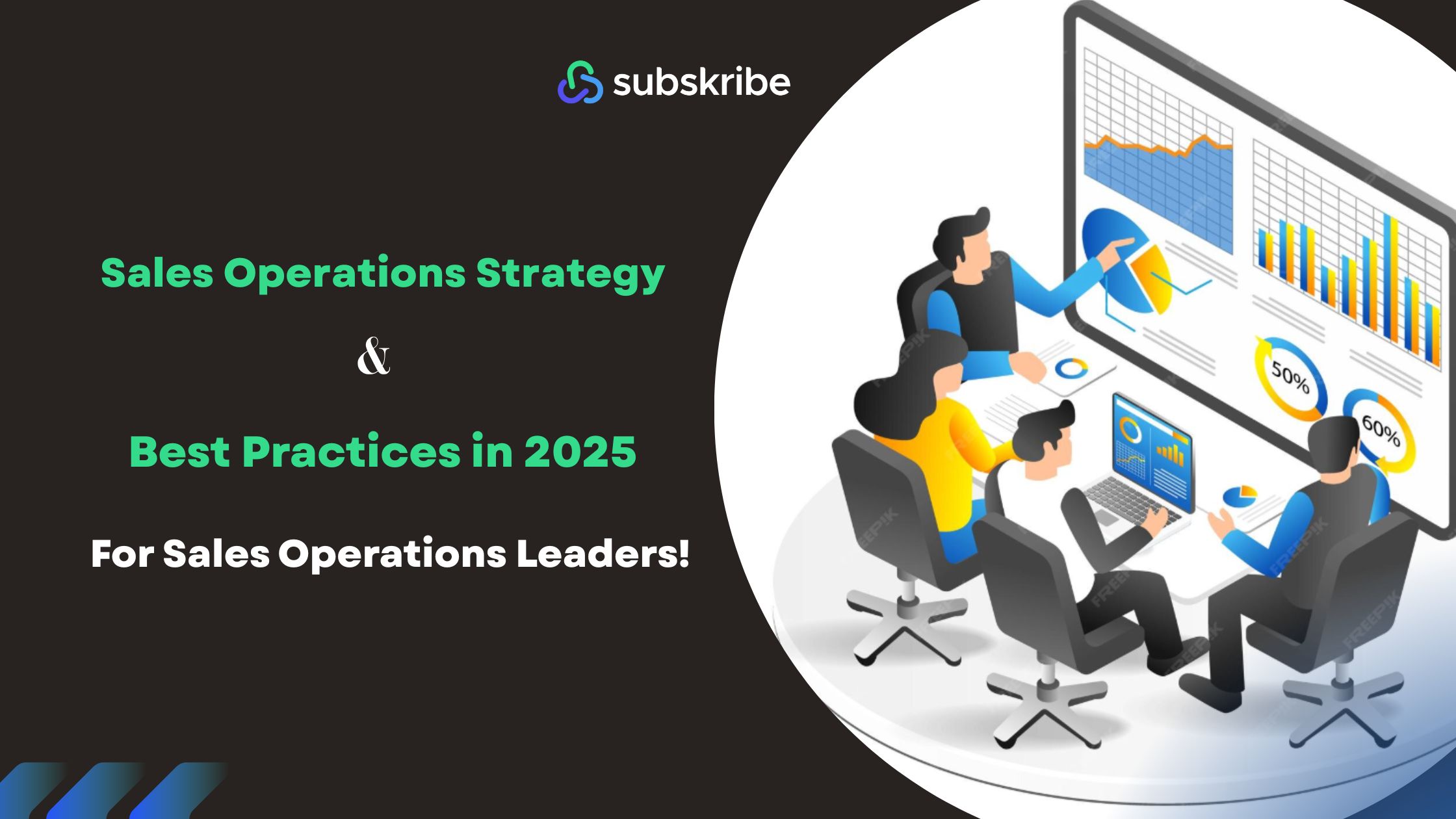Your sales team just closed three enterprise deals in one week. Amazing news, right? Except now your operations team is completely underwater. Finance is hunting through email threads for contract details. Sales reps are stuck waiting days for quote approvals. Your RevOps lead is updating pricing rules in spreadsheets well past midnight. If this sounds painfully familiar, you're not alone.
This is what happens when you grow without scalable sales operations. Most B2B SaaS companies hit this wall somewhere between $10M and $50M ARR. The scrappy, manual processes that worked perfectly when you were finding product-market fit? They suddenly become the very thing holding you back. Manual quoting, inconsistent approvals, disconnected systems. These aren't just annoying bottlenecks. They're actively costing you deals.
Scaling sales operations means building processes, systems, and governance that grow naturally with your business without drowning your team in complexity or forcing you to double headcount every year. It's about creating workflows that handle 100 deals just as smoothly as they handled your first 10.
In this guide, we're walking through exactly how to do that. You'll get a practical, step-by-step roadmap for transforming your sales operations from constant firefighting mode into a strategic growth engine. We'll cover everything from auditing your quote-to-cash process to automating workflows that eat up your team's time. Plus, you'll get a checklist you can start using today and we'll show you how platforms like Subskribe can eliminate the manual work that's slowing you down.
Let's dive in.
Step 1: Audit & Map Your Current Quote-to-Cash Process
Before you can build scalable sales operations, you need to know exactly what you're working with. Think of this as taking inventory before renovating a house. You can't fix what you can't see.
Scope Your Audit Across Every Touchpoint
Your audit should cover the entire quote-to-cash journey. That means looking at your CRM workflows, spreadsheets (yes, all of them), CPQ system or quoting process, billing platform, approval chains, and contract templates. Don't skip the "shadow systems" either. Those unofficial spreadsheets and workarounds your team created because the official process was too clunky.
Map out every step from the moment a rep starts building a quote to when finance recognizes the revenue. Who touches it? Where does it get stuck? What information gets manually re-entered across systems?
Common Audit Findings That Kill Velocity
Here's what most companies discover: pricing rules living in Excel that only two people understand. Product catalogs are duplicated across three different systems with conflicting information. Quotes bouncing between five different people before approval. Contracts that require manual editing every single time. Sales reps are spending more time chasing approvals than talking to customers.
Sound familiar? These aren't just inefficiencies. They are barriers to scaling operations effectively.
Your Deliverable: A Clear Picture of Reality
Finish this step with two things: a visual process map showing every handoff and decision point in your quote-to-cash flow, and a prioritized list of pain points ranked by impact and frequency. This becomes your roadmap for what to fix first.
Start with a 30-minute process audit - Subskribe's team can help you identify the bottlenecks costing you deals.
Step 2: Standardize Core Processes & Playbooks
Once you've mapped where things break down, it's time to create consistency. Scalable sales operations require standardized processes that every team member can follow - not tribal knowledge trapped in someone's head.
Key Playbooks to Standardize First
Start with the processes that touch every deal: your pricing playbook (how to quote different products and packages), discount approval workflows (who can approve what level of discount), renewal processes (timing, pricing adjustments, and who owns the conversation), and complex deal procedures (multi-year contracts, custom terms, or enterprise negotiations).
These playbooks don't need to be 50-page documents. Think one-page guides with clear decision trees. "If this, then that." Simple enough that a new AE can follow them without asking three people for help.
Assign RACI and Set Clear SLAs
For each process, define who's responsible, accountable, consulted, and informed. Then set service level agreements: "Discount approvals under 20% should take less than 4 hours." "Quote revisions should be completed within 1 business day." These SLAs give your team clear expectations and help you measure where scaling sales operations is actually working.
Make Playbooks Actually Useful
Here's a practical tip: create short video walkthroughs for each playbook. Two-minute screen recordings showing exactly how to build a quote or submit a discount request beat lengthy PDF manuals every time. New sellers can watch, follow along, and get up to speed faster.
Subskribe enforces standardized templates and configurations, reducing deviation and ensuring every quote follows your approved playbook automatically.
Step 3: Centralize Data: Create a Single Source of Truth
Here's the brutal truth: you can't achieve scalable sales operations when your data lives in five different places. When Sales has one version of a contract in Salesforce, Finance has another in their billing system, and the actual signed PDF says something different, you're setting yourself up for revenue leakage and compliance nightmares.
Why Disparate Data Kills Your Ability to Scale
Every time someone has to manually reconcile data across systems, that's time not spent on strategic work. Worse, manual data entry means errors. Those errors compound: wrong pricing gets quoted, renewals get missed, revenue recognition gets delayed. As deal volume grows, these problems multiply exponentially.
The Critical Fields You Need in One Place
Focus on centralizing the data that impacts revenue: contract terms and effective dates, pricing tiers and product configurations, discount history and approval chains, renewal dates and expansion opportunities, and customer usage data for consumption-based models. When this information lives in a single system of record, everyone's working from the same playbook.
Integration Priorities That Actually Matter
Build your data flow logically: CRM → CPQ → Billing → Finance. Your CRM owns the customer relationship. Your CPQ system (or Quote-to-Revenue platform) owns the deal configuration and pricing. Your billing system owns invoicing and collections. Your ERP owns financial reporting. When these systems sync automatically, you eliminate the manual handoffs that slow everything down.
Subskribe creates synced deal records with complete audit trails, so Sales, Finance, and RevOps always see the same data, eliminating version control headaches and enabling true scaling operations.
Step 4: Automate Repetitive Workflows
Now we get to the good stuff. Automation is where scalable sales operations transform from theory into measurable impact. But don't try to automate everything at once. Start with the workflows that are both high-volume and high-error.
Prioritize These Workflows First
Focus on quoting (generating quotes from approved templates and pricing), approval workflows (routing discount requests to the right approvers based on deal size and margin), and renewal processes (triggering renewal quotes 90 days before expiration with updated pricing). These workflows happen constantly, involve multiple handoffs, and are prone to human error when done manually.
Your Automation Checklist
Build quote templates that auto-populate based on product selections and customer attributes. Set up auto-approvals for standard deals within defined thresholds if it's under a 15% discount and uses standard terms, let it go through instantly. Create conditional pricing rules that automatically apply volume discounts or multi-year incentives based on deal parameters. Configure renewal workflows that alert the right people at the right time with pre-built renewal quotes ready to go.
The Results You Can Expect
Companies that automate these core workflows typically see a 60-70% reduction in quote generation time, 50% fewer pricing errors, and approval cycles that shrink from days to hours. That's not just efficiency. It's competitive advantage. Faster quotes mean you close deals before competitors even respond.
Step 5: Design Scalable Pricing & Discounting Rules
Pricing complexity kills deals. If your reps need to ping three people and check two spreadsheets just to quote a multi-year contract with usage tiers, you're leaving money on the table. Scaling sales operations requires pricing rules that are both flexible and foolproof.
Pricing Models That Actually Scale
The best scalable operations use pricing structures that grow with customers: tiered pricing (good/better/best packages that are easy to understand and quote), usage-based pricing (customers pay for what they consume, with predictable rate cards), and subscription plus add-ons (core platform fee with modular add-ons for specific features or services). These models work because they're self-service friendly, easy to explain, and don't require custom configuration for every deal.
Build Smart Discount Guardrails
Set clear thresholds: reps can approve up to 10% themselves, managers handle 10-20%, VPs approve 20-30%, and anything above requires executive sign-off. Configure role-based approval routing so that discount requests are automatically routed to the correct person. And create smart fallback pricing: if a rep tries to discount below your floor, the system suggests an alternative, such as extended payment terms or additional services, instead of just saying "no."
Example Discount Rule Set
Standard deals (annual contracts, list price products): up to 15% auto-approved. Multi-year commitments: an additional 5% for 2-year, 10% for 3-year. Volume discounts: 10% off at 100+ seats, 15% at 500+. Early payment discount: 2% for payment within 10 days.
Subskribe's flexible pricing engine handles everything from simple subscriptions to complex usage-based models with built-in guardrails that keep discounting consistent and compliant.
Step 6: Build an Efficient Deal Desk & Governance Model
As you grow, not every deal fits your standard playbook. That's where a modern Deal Desk becomes essential for scalable sales operations. But here's the key: your Deal Desk shouldn't be a bottleneck; it should be an accelerator.
What a Modern Deal Desk Actually Owns
Your Deal Desk handles exceptions and non-standard terms, enforces governance and compliance policies, manages complex approval chains for high-risk deals, and maintains audit trails for revenue recognition and legal reviews. They're the experts who step in when deals go off-script, ensuring you can say "yes" to customer needs without creating chaos in your operations.
Structure for Speed: Rules-First, SLA-Driven, AI-Supported
The best Deal Desks operate rules-first, automate what you can, and escalate what you must. Set aggressive SLAs for different deal types: standard exceptions get reviewed in 4 hours, complex custom terms in 24 hours. And leverage AI to analyze deal history, suggest similar precedents, and flag potential risks before they become problems. This is where scaling operations meets intelligent automation.
Example Escalation Flow & SLA Targets
Tier 1 (auto-approved in minutes): standard discounts within guardrails, pre-approved terms. Tier 2 (4-hour SLA): non-standard discounts, extended payment terms, minor contract edits. Tier 3 (24-hour SLA): custom pricing structures, multi-entity deals, non-standard legal terms. Tier 4 (48-hour SLA, executive review): strategic accounts, first-of-kind deals, significant revenue impact.
Subskribe's Deal Desk AI speeds up decision-making by surfacing similar past deals, suggesting approval paths, and automatically capturing rationale for audit trails turning your Deal Desk into a strategic asset, not a constraint.
Step 7: Measure, Monitor & Optimize with a Feedback Loop
You can't improve what you don't measure. Scaling sales operations isn't a one-time project. It's a continuous cycle of measuring performance, identifying friction, and optimizing processes. The companies that scale successfully treat their ops function like a product team: always testing, always improving.
Core KPIs to Track on Your Dashboard
Monitor quote-to-close time (how long from initial quote to signed contract), quote accuracy rate (percentage of quotes that don't require revisions), discount leakage (deals approved outside your guardrails), average deal size and velocity, approval cycle time by deal type, and win rates by product, segment, and sales rep. These metrics tell you where your scalable operations are working and where they're breaking down.
Establish a Regular Review Cadence
Run weekly Deal Desk reviews to address current blockers and approve exceptions. Hold monthly operations reviews to analyze trends, identify process gaps, and prioritize improvements. Conduct quarterly strategy sessions to assess whether your pricing, approvals, and workflows still align with business goals as you scale.
How to Run a Post-Mortem on Lost Deals
When deals fall through, dig into why. Was the quote too slow? Pricing too rigid? Approval process too complicated? Document patterns: if you're losing three deals a month because competitors quote faster, that's a signal to prioritize quote automation. Turn lost deals into learning opportunities that sharpen your processes.
Subskribe's reporting capabilities give you real-time visibility into every metric that matters, from quote velocity to discount patterns to Deal Desk bottlenecks so you can optimize before problems compound.
Your Roadmap to Scalable Sales Operations
Building scalable sales operations isn't about perfection; it's about progress. The companies that successfully scale their revenue engines do so by tackling one process at a time, measuring results, and continuously iterating.
Your 8-Point Action Checklist
Here's your roadmap for scaling sales operations effectively:
- Audit your current quote-to-cash process and identify bottlenecks
- Map every handoff and decision point visually
- Standardize playbooks for pricing, discounts, renewals, and complex deals
- Integrate your systems (CRM → CPQ → Billing → Finance) for a single source of truth
- Automate high-volume, high-error workflows like quoting and approvals
- Design scalable pricing rules with smart discount guardrails
- Build an efficient Deal Desk with clear escalation paths and SLAs
- Measure continuously with KPIs and regular review cadences
Ready to Scale Without the Growing Pains?
Subskribe's AI-native Quote-to-Revenue platform helps high-growth SaaS companies eliminate manual work, accelerate deal velocity, and scale operations without scaling headcount. Book a demo now!















